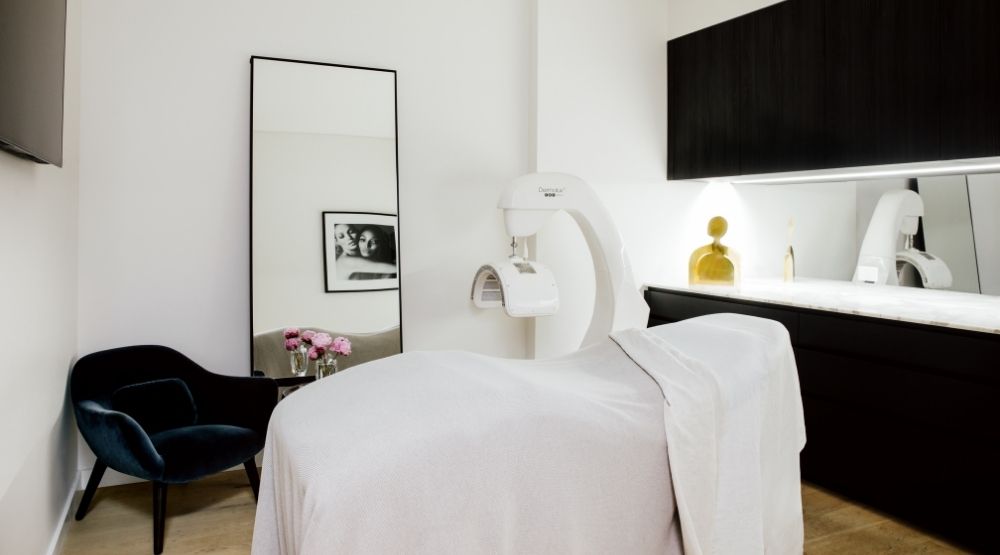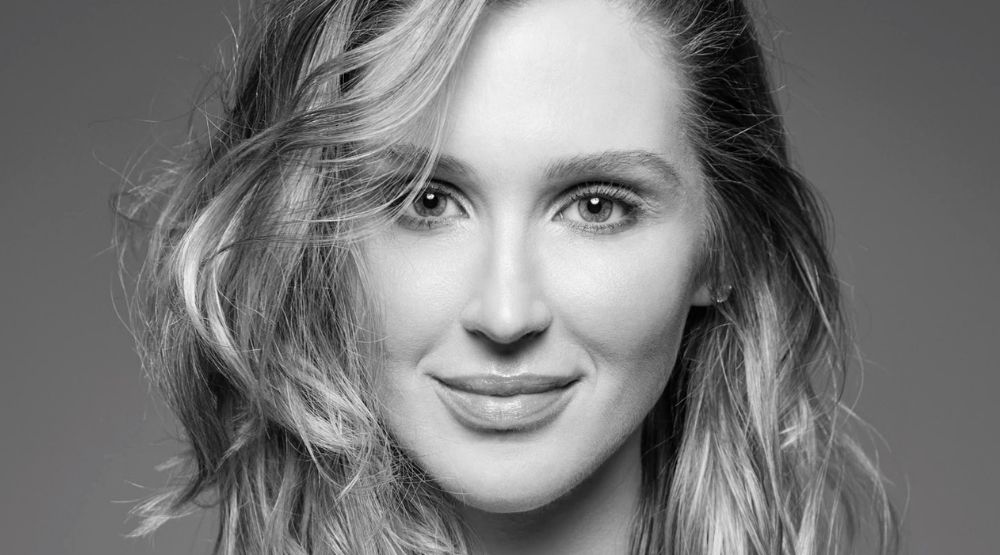For our September-October technology issue, Ruby Feneley spoke with Melanie Grant about the importance of salon insurance in an increasingly high-tech services space and the need for beauty therapy education to catch up with Australia’s diverse population.
As a beauty journalist, it’s hard to conduct an interview in August 2021 without discussing the impacts of COVID-19. Beauty businesses worldwide are grappling with the ramifications of Delta, and the impact of rolling lockdowns.
As I speak with Melanie Grant, she has just finished a meeting with the American Board of Cosmetology as they prepare for a shutdown in LA. The Row, located below the Melanie Grant Studio in Melrose Place has just reported an entire team of staff members infected with Delta, and for the second year in a row Melanie is preparing to close shop. Like many in the beauty industry, Melanie feels frustrated by blanket policy decisions made around beauty businesses. “We’re the first to close and the last to open,” she says over the phone, “it is frustrating when you see restaurants and cafés with hundreds of people packed in opening before beauty salons, where we’re seeing clients one on one and already operating with strict hygiene protocols.”
Like many salon owners she’s feeling the pressure of trying to support multiple teams through lockdown – “my staff have kids and mortgages – I do have sleepless nights.” But we’re not here to discuss COVID, we’re here to discuss another force for change that is shaping the future of the industry – emerging technologies and the short- and long-term ramifications they have for businesses.

A brave new world:
When Melanie started in beauty, she instantly gravitated towards high-tech treatments. “I graduated in 1999,” she reflects, “within two years of that, I had started working with laser and IPL.” Melanie was inspired by the transformative results these treatments were providing for clients suffering pigmentation, rosacea and dyschromia. But over the years Melanie has learnt to be cautious. “In beauty, so much of the ‘latest and greatest is all about marketing,” she says – and the truth behind that marketing can be alarming. She recalls, “When Fraxel brought out their dual – the 1927 Wavelength – it was marketed for melasma, reps were really pushing it as a treatment for pigmentation. Of course, it bulk heated and made things worse.”
Examples like this have made Melanie wary of treatments that seem “too good to be true” or are brand new to the market. “I know it’s frustrating for staff and distributors, but I’ll often wait for a year!” she confesses. She also believes in old-fashioned, in-person training. While online learning, particularly during COVID, has provided convenience for business owners and staff wanting to upskill Melanie has her doubts about whether it will ever replace the value of in person. She explains: “Companies will say they have the most complex and amazing virtual training sessions, but personally I need to see the treatment performed in person, and I want my staff to have a certificate at the end of it – I really feel there are still some things that can’t be done online.”
Operating at the cutting edge:
In 2019 QBE released their “SMEs and Insurance Report” in which they surveyed over 600 Australian small and medium-sized businesses. The report found that 62% of small businesses were underinsured. The report noted that rapidly scaling businesses, like salons adopting high-tech treatments in a bid to extend their menu and client base, were being left vulnerable. The report advised business owners to stay in touch with insurance brokers as they scale to ensure their insurance matches their evolving business models.
Melanie believes that with new treatment technologies available to salons, many businesses are unknowingly operating underinsured. She guesses at this based on the skyrocketing cost of her own insurance, and the pricing structures observed at some salons. She says, “if you don’t have a doctor on-sight and you’re performing any skin penetration, your insurance will go through the roof.” This is a cost that is passed on to the customer. Any salon charging mid-to top-tier prices will know the pain of fielding question (that sound more like accusations) from clients reporting having received the same service elsewhere for a fraction of the cost.

Melanie Grant knows this better than others. She says, “I don’t feel the need to point out that they’re sitting on a $40,000 couch, or that we have a full Biologique Recherche back bar. That’s my choice. It just means we’re just not for everyone and I’m okay with that.” However, she does feel strongly about the “race to the bottom” she’s observed as salons competing to appeal to clients’ pocketbooks are not able to provide safety. Discounting the cost of “beautiful French tea” and top of the range skincare Melanie says her most significant expense is insurance. She’s frank: “I know what my insurance bill is, and $100.00 for a facial is not going to cover it. It won’t cover cartridges on the device!” And when clients go cheap and businesses cut corners, it can be hard to witness the outcomes.
She recounts: “Right before Christmas in Sydney, we saw a client who had the worst burns I had ever seen from laser hair removal. Her whole Brazilian and all down the inside of one leg had burned.” The woman had been treated at what Melanie regarded as a reputable clinic; they had advised the client to apply a cold compress. Melanie says, “I was looking at second-degree burns that required antibiotics and medical wound dressing” – a trip to the hospital, in other words. As she’s said in countless interviews, when customers buy cheap, they buy twice – and often more when they turn to businesses like Melanie Grant’s to correct the damage.
Education:
A growing issue for the salon industry touched on in our Mind the Gap report, is lack of training around different skin tones. Melanie says “I think what’s often missing is multiculturalism in aesthetic practice.”
While some attention is paid in most therapy courses, Melanie doesn’t feel it’s sufficient. She says “The Fitzpatrick scale is ticked off in training, but I see skin types treated aggressively and inappropriately constantly.” Melanie says when entering a consult, it’s important not to go by first impressions – don’t be afraid to enquire about ethnic background. She explains, “I always ask – I’ll usually get an odd look and a ‘why?’ but even if you have green eyes and blonde hair, if you’re half Lebanese, I will treat your skin differently, if you have blonde hair and blue eyes but you’re a quarter Chinese, I’ll treat your skin differently – because you’re at much higher risk of hyper pigmenting than someone with a similar skin tone, but Celtic background.”
Melanie feels the beauty education system needs to account for the diversity of the Australian population. She says, “We are not just a Caucasian nation, there needs to be better education and better training.” She has seen disastrous results from everything from laser and plasmage (the latter of which Melanie is yet to implement in studio) to traditional treatments like microdermabrasion. In fact, one of the worst cases she saw was from extractions. One of her clients, a high profile Chinese model, had booked a major campaign. Melanie couldn’t squeeze her in. She says: “Her agency sent her somewhere else, and they performed extractions even though she had flawless, twelve-year-old looking skin. When she came into us, her skin was raw, scarred and sore – it took about three months to heal with multiple rounds of genesis to break down the pigment. I told her you can never let anyone squeeze your skin!”

A culture of accountability:
In a world where the results that can be achieved in salon are more competitive than ever, the risk is also greater. Melanie Grant says beauty businesses need to accept that things can, and will, go wrong. She says, “Whether you’re a doctor, a nurse, a dermal therapist or a beauty therapist there is always a chance something will go wrong with a client. When you’re working with lasers and strong chemicals, you need to accept there is always a risk.” Prevention is of course better than cure – but practitioners need to be prepared for worst-case scenarios. “Don’t dismiss or downplay your client’s concerns – telling them ‘you’ve never seen this before’ won’t make the problem go away!” Instead, she suggests inviting the client in to have a look. “Even if you think it’s just a scab from the laser – I say get them in and under a white light, because what they’ve said over the phone may be worse in person. And if it isn’t, they’ll feel heard and reassured and you’ll have peace of mind.” And what if something has gone seriously wrong? Melanie says acknowledge, be honest, and outline a treatment plan: “I would say ‘it looks like we’ve overtreated, or the setting was too high for you. We need to get you to a doctor and on some antibiotics, then in a week or so, we will have you back for LED and start corrective treatments.” Ultimately, she feels that while the technology on offer is exciting for therapists and can lead to better client and staff satisfaction, salons need to accept risk and responsibility. “Ultimately, she says, when you take a laser or anything to someone’s face, it’s on you,” she says, “I always say, if there’s any doubt, there’s no doubt.”
MELANIE GRANT’S TIPS FOR COVERING YOUR BUSINESS:
• When implementing a new device, check how it stacks up against your
insurance plan
• When it comes to aftercare, there’s no such thing as too much: “When
you’ve seen clients go to the beach after Fraxel, you learn not to expect
they won’t know not to pick their skin. I have a waiver for treatments as
mild as microdermabrasion,” says Melanie.
• Consultation: don’t be shy to ask about cultural heritage, this will allow
you to deliver clients their best results – and minimize risk.
• If clients have concerns: assess in person, they may not understand the
extent of the damage
• If something has gone wrong: Acknowledge, address and outline a plan.
Read the current issue of our digital magazine here:
- For more news and updates, subscribe to our weekly newsletter
- Follow us on Instagram
- Like us on Facebook
- Join Australia’s largest network of beauty industry professionals on LinkedIn
- Subscribe to our print magazine
Have an idea for a story or want to see a topic covered on our site and in our pages? Get in touch at info@professionalbeauty.com.au.

